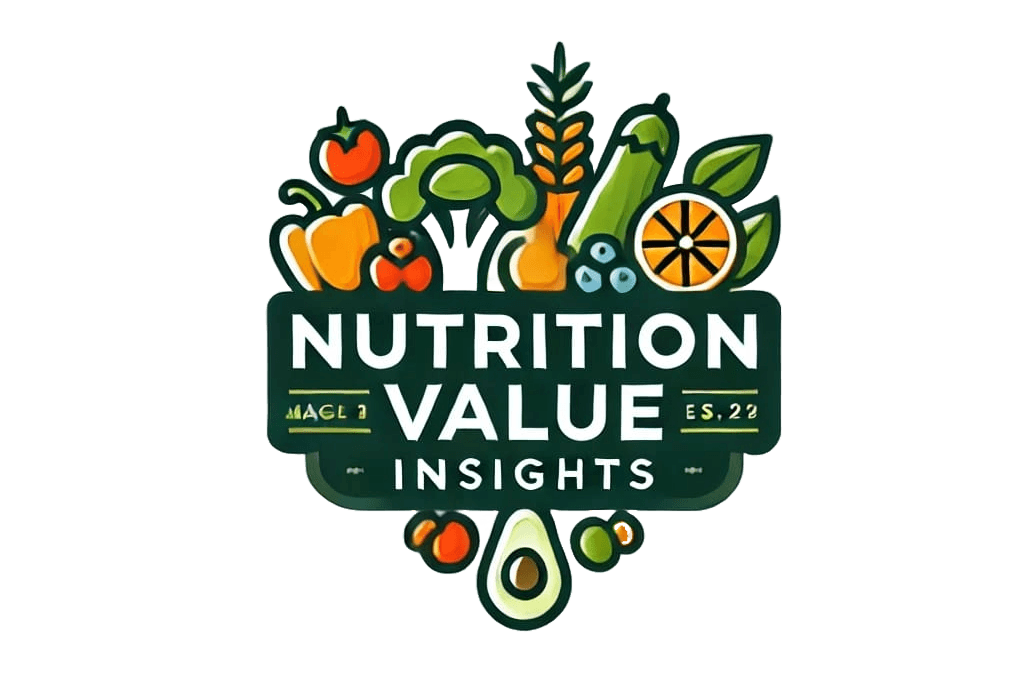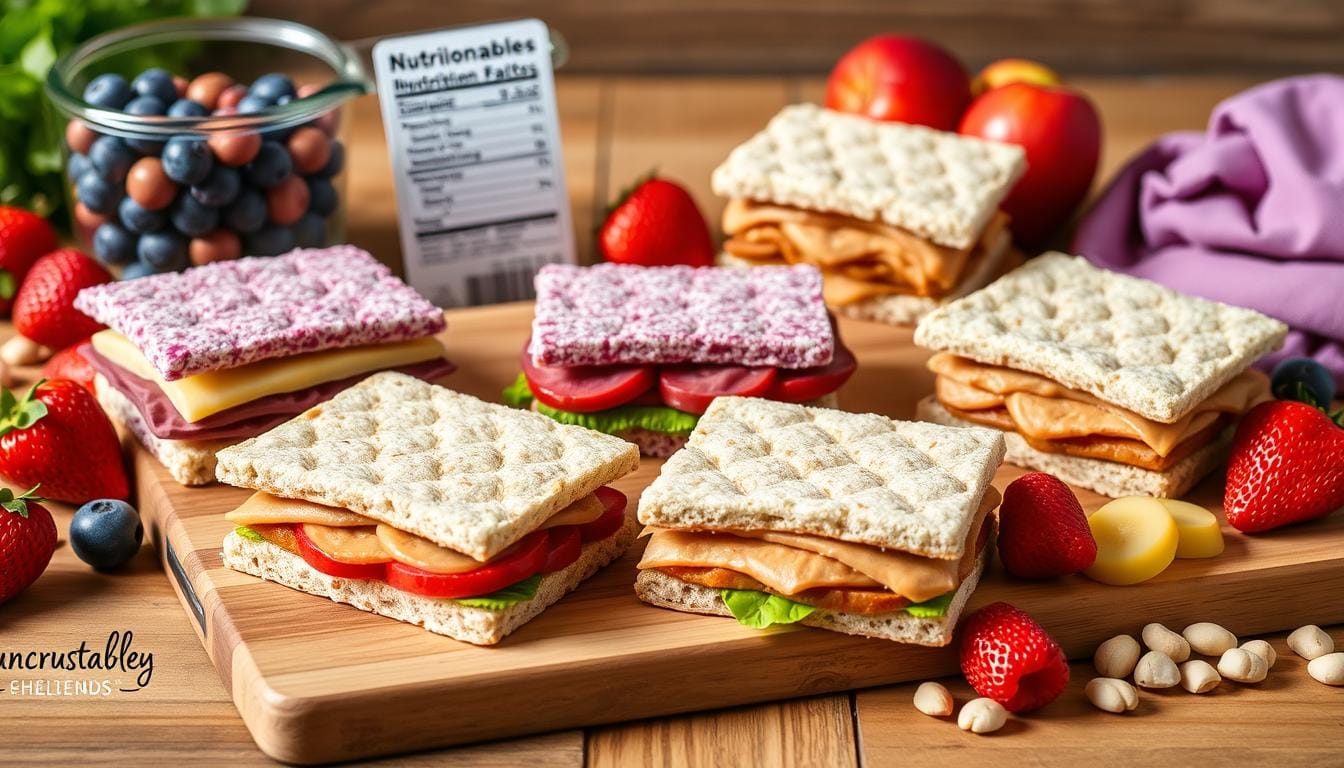Uncrustables Nutrition Information: Calories, Ingredients, and Health Facts
Uncrustables are a favorite among many for their convenience and taste. They’re great for lunchboxes, quick snacks, or treats. Knowing what’s in them helps you choose better. We’ll look at calories, ingredients, and health facts of these sandwiches.
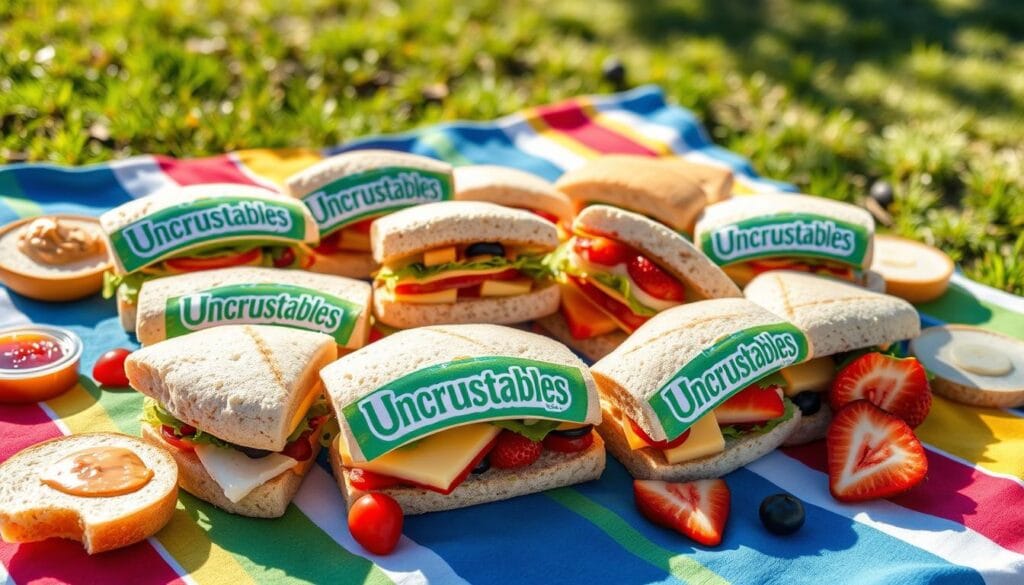
Table of Contents
Understanding Uncrustables: A Popular Sandwich Option
Uncrustables are a favorite in many homes, especially for parents looking for easy meals. These sandwiches are perfect for quick breakfasts or lunches. They have a rich history and come in many flavors, making them a top choice for many.
History and Development of Uncrustables
The J.M. Smucker Company introduced Uncrustables in 1986. They wanted to make a sandwich that was easy and mess-free. Since then, they’ve added many flavors to meet different tastes and needs.
Why Consumers Choose Uncrustables
People love Uncrustables for how easy they are to use. They save time and are great for those always on the move. Kids also enjoy them because they don’t have to worry about eating the crust.
Product Varieties Available
Uncrustables come in many flavors, from classic uncrustables peanut butter and jelly to options for kids. They even have gluten-free and organic choices. This makes it easy for everyone to find something they like.
“Uncrustables offer a convenient and kid-friendly solution for busy families, with a variety of flavors to suit different tastes and dietary needs.”
Complete Uncrustables Nutrition Breakdown
Uncrustables have different nutritional values based on their flavors. But, they share some common traits that make them popular.
The bread in Uncrustables is a mix of enriched flour, whole wheat flour, and sugar. The fillings, like peanut butter, have peanuts, sugar, and oils. Some also have fruit spreads, adding more sugars and preservatives.
| Nutrition Facts (per serving) | Amount |
|---|---|
| Calories | 320 |
| Total Fat | 17.00g (22% of Daily Value) |
| Saturated Fat | 3.500g (18% of Daily Value) |
| Trans Fat | 0.000g |
| Cholesterol | 0mg |
| Sodium | 290mg (13% of Daily Value) |
| Total Carbohydrate | 36.00g (13% of Daily Value) |
| Dietary Fiber | 3.0g (11% of Daily Value) |
| Sugars | 14.00g (including 12.00g of added sugars, accounting for 24% of Daily Value) |
| Protein | 10.00g |
| Vitamin D | – |
| Calcium | 43mg (3% of Daily Value) |
| Iron | 1.00mg (6% of Daily Value) |
| Potassium | 235mg (5% of Daily Value) |
| Calorie Breakdown | 45% fat, 43% carbs, 12% protein |
Uncrustables are high in calories, fat, and added sugars. They do offer some important nutrients. But, they might not be the best snack choice for everyone. It’s important to think about their calorie and sugar content before deciding if they fit your diet.
“NFL teams consume anywhere from 3,600 to 4,300 Uncrustables per week, totaling at least 80,000 Uncrustables in a season.”
Key Ingredients Analysis in Uncrustables
Looking into Uncrustables, we find interesting ingredients. From the bread to the fillings and preservatives, knowing what’s in them is key. It helps those who care about their health make better choices.
Bread Component Breakdown
The bread in Uncrustables is a mix of enriched unbleached flour, whole wheat flour, sugar, yeast, and soybean oil. This mix gives the bread a soft, doughy feel. It keeps the filling inside.
Filling Ingredients Explained
The fillings in Uncrustables change, but often include peanut butter. It’s made from peanuts, sugar, and vegetable oils. Fruit spreads, like grape jelly, have sugar, fruit, and preservatives like potassium sorbate. These help keep the spread fresh longer.
Preservatives and Additives
Uncrustables also have extra ingredients to keep them fresh and consistent. These include dough conditioners like enzymes, ascorbic acid, and calcium peroxide. They help the bread and fillings stay good.
| Ingredient | Purpose |
|---|---|
| Enriched Unbleached Flour | Provides structure and texture to the bread |
| Whole Wheat Flour | Adds fiber and wholesome nutrients |
| Sugar | Sweetens the bread and fillings |
| Peanut Butter | Main source of protein and healthy fats |
| Fruit Spreads | Provide natural sweetness and fruity flavors |
| Potassium Sorbate | Acts as a preservative to extend shelf life |
Knowing what’s in Uncrustables helps us make better food choices. It lets us find options that fit our health goals.
Caloric Content and Portion Size
The uncrustables calories depend on the filling and size. Uncrustables snack packs offer a controlled serving. This makes it easier to track calories.
For instance, a Smucker’s Uncrustables Peanut Butter & Grape Jelly sandwich has 320 calories. It’s made up of 45% fat, 43% carbs, and 12% protein. This means it has 17g of fat, 36g of carbs, and 10g of protein per 76g serving.
This serving gives 22% of the daily fat, 13% of carbs, and 16% of calories needed. It’s key to check labels and know portion sizes. This helps make choices that fit your diet and taste.
Understanding Uncrustables Protein and Carbohydrates
Uncrustables are known for their protein and carbohydrate content. Let’s explore how these nutrients impact their health benefits. This is important for those looking at this sandwich as a snack or meal.
Protein Sources and Content
Peanut butter is the main protein source in Uncrustables. Each sandwich has about 6 grams of protein. This is relatively low, especially for those who are active or athletes.
Carbohydrate Profile
Uncrustables have a lot of carbohydrates. This comes from the bread and fillings. Each sandwich has about 28 grams of carbohydrates. This can be a quick energy source for athletes and the active.
Sugar Content Analysis
Sugar is found in Uncrustables, in the bread and fillings. The total sugar content is around 10 grams per sandwich. This is something to think about for those watching their sugar intake.
| Metric | DIY Uncrustable | Store Bought Uncrustable |
|---|---|---|
| Calories | 219 | 210 |
| Fat | 10 g | 9 g |
| Sodium | 265 mg | 220 mg |
| Total Carbohydrates | 27 g | 28 g |
| Dietary Fiber | 4.75 g | 2 g |
| Total Sugars | 10 g | 10 g |
| Protein | 8 g | 6 g |
| Iron | 1.75 mg | 1.2 mg |
In summary, Uncrustables are a good source of carbohydrates. They have moderate protein and a bit of sugar. Knowing this can help you decide if they fit your dietary needs.
Dietary Considerations and Allergens
When looking at uncrustables nutrition, it’s key to think about dietary limits and allergens. These sandwiches have common allergens like wheat and peanuts. This makes them bad for people with related food allergies.
Also, some uncrustables have soybean oil, which might worry those with soy allergies. Some types also have fully hydrogenated vegetable oils. This could be a problem for those watching their trans fat intake.
If you have special dietary needs or allergies, check the ingredients and nutrition facts of uncrustables carefully. This way, you can make sure these sandwiches fit your health and dietary needs.
Potential Allergens in Uncrustables
- Wheat
- Peanuts
- Soy (in some varieties)
Dietary Concerns with Uncrustables
- Trans fat intake from fully hydrogenated vegetable oils
- Suitability for individuals with soy allergies
- Adherence to gluten-free or other dietary restrictions
Knowing about the dietary concerns and allergens in uncrustables helps you make better choices. It’s important to think about your health when deciding if are uncrustables healthy or not.
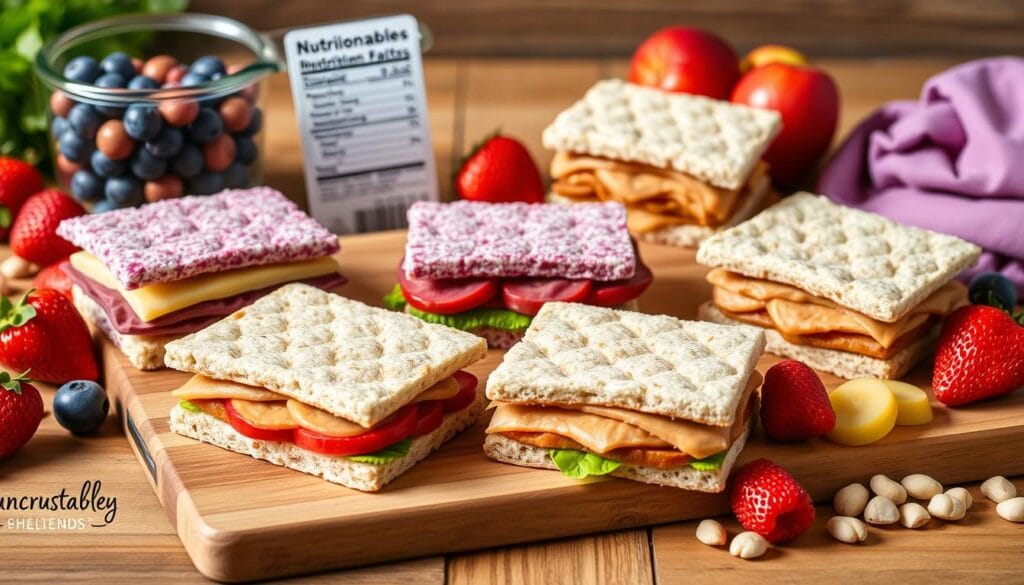
Health Benefits and Concerns
Uncrustables can give you quick energy thanks to carbs and some protein from peanut butter. But, they also have added sugars and preservatives. These can be a worry for those looking for healthier snacks. It’s important to think about the good and bad when deciding if Uncrustables are a good choice for meals or snacks.
Nutritional Advantages
Uncrustables have some good points. The peanut butter ones have protein, and the whole wheat bread has fiber. They’re also quick to eat, which is great for busy people.
Potential Health Drawbacks
- High in added sugars: Uncrustables have up to 12 grams of sugar per serving. Even the ones with less sugar still have 7 grams. This is more than the daily limit for added sugars.
- Processed ingredients: They’re made with processed stuff like hydrogenated vegetable oils and preservatives. These might cause inflammation and increase disease risk.
- Allergen considerations: Wheat and peanuts are common allergens. So, Uncrustables aren’t good for people with allergies or special diets.
- Minimal nutritional value: Compared to homemade sandwiches, Uncrustables have little fiber, vitamins, and minerals. They mostly have carbs and fat.
While Uncrustables are easy to grab, their health benefits need careful thought. Especially for those wanting a healthier snack or meal. Fresh fruit, yogurt, or hummus might be better choices for a balanced diet.
Comparing Uncrustables to Homemade Alternatives
The debate on Uncrustables versus homemade sandwiches is ongoing. Uncrustables are convenient, but there are things to consider when comparing them to homemade ones.
Homemade Uncrustables let you control what goes into your sandwich. Each homemade Uncrustables sandwich has 135 calories, 25g of carbs, 5g of protein, and 2g of fat. It also has about 239mg of sodium, 1g of fiber, and 3g of sugar.
| Nutrient | Homemade Uncrustables | Store-bought Uncrustables |
|---|---|---|
| Calories | 135 | 210 |
| Carbohydrates | 25g | 28g |
| Protein | 5g | 6g |
| Fat | 2g | 9g |
| Sodium | 239mg | 220mg |
| Fiber | 1g | 2g |
| Sugar | 3g | 10g |
Uncrustables are great for quick meals and last longer. But, they might have more preservatives and sugars than homemade ones.
Choosing between Uncrustables and homemade sandwiches depends on what you prefer and need. Uncrustables are easy to grab and go, but making your own gives you more control over what you eat.
“Uncrustables and similar crustless sandwiches are convenient for on-the-go scenarios and can be consumed before or after workouts, but should be paired with adequate protein to replenish muscle carbohydrate stores.”
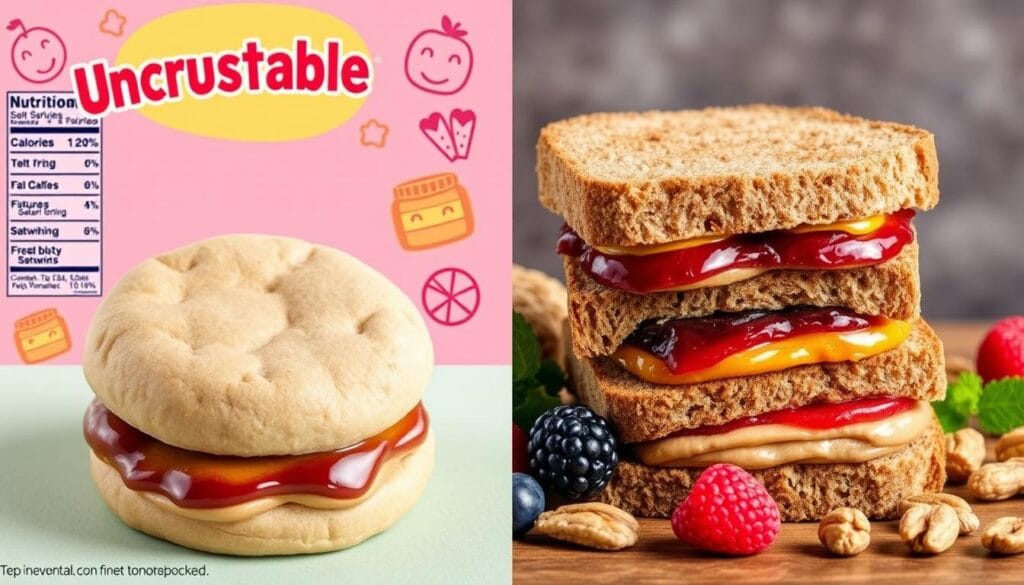
Storage and Shelf Life Information
Uncrustables snack packs are a hit for their convenience. They’re a quick, tasty snack. But, it’s key to store and handle them right to keep them good and safe. Let’s look at how to store and enjoy Uncrustables.
Proper Storage Methods
Uncrustables are sold frozen and should stay that way until you eat them. Keep them in the freezer at 0°F or below. When you take them out, you can thaw them at room temperature or in the fridge.
Best Practices for Consumption
After thawing, eat Uncrustables within a certain time for the best taste and safety. The packaging will tell you how long to keep them. Always follow these tips to enjoy your Uncrustables.
By storing and eating Uncrustables the right way, you’ll enjoy their taste and convenience. These snack packs are made to be easy and tasty. Just follow the maker’s advice to get the most out of them.
| Product | Shelf Life | Allergy-Friendly | Protein Content |
|---|---|---|---|
| Smucker’s Uncrustables | Frozen: 8-12 months Thawed: 5-7 days | Contains peanuts and tree nuts | 5 grams per serving |
| Super Sammies by Nurture Life | Frozen: 12 months Thawed: 7 days | No peanuts or tree nuts | 8 grams per serving |
Knowing how to store and eat Uncrustables snack packs ensures they stay fresh and safe. Enjoy this convenient treat every time.
Conclusion
Uncrustables are a quick and easy sandwich choice with many flavors. They give you energy and protein in some types. But, they also have added sugars and preservatives. It’s important to think about your diet and what you need when picking Uncrustables.
There’s a big need for healthy, easy-to-make food now. Healthy Uncrustables are a good choice for those looking for better options. They let you control what goes in, are easy to make, and you can customize them. Plus, you can eat the right amount.
The healthiness of Uncrustables depends on what’s inside. Be careful of added sugars, preservatives, and how much protein they really have. Also, remember to store them right to keep them fresh and good to eat.
FAQ
What are the main ingredients in Uncrustables?
Uncrustables have bread made from enriched flour, whole wheat, sugar, yeast, and soybean oil. The fillings include peanut butter and fruit spreads with added sugar and preservatives.
How many calories are in Uncrustables?
The calories in Uncrustables depend on the flavor and size. The type of filling, like peanut butter or jelly, affects the calorie count.
Are Uncrustables a healthy snack option?
Uncrustables offer quick energy and some protein. But, they also have added sugars and preservatives. Think about the nutritional value when deciding if they’re a good snack.
What is the protein content in Uncrustables?
The protein in Uncrustables mainly comes from peanut butter. The protein amount can change based on the ingredients and filling.
Do Uncrustables contain common allergens?
Yes, Uncrustables have common allergens like wheat and peanuts. They also include soybean oil, which might be a problem for soy allergy sufferers.
How should Uncrustables be stored and consumed?
Keep Uncrustables frozen until you’re ready to eat them. You can thaw them at room temperature or in the fridge. Once thawed, eat them within a certain time for the best taste and safety.
How do Uncrustables compare to homemade sandwiches in terms of nutrition?
Uncrustables are convenient but might have more preservatives and sugars than homemade sandwiches. Making your own sandwiches lets you control the ingredients, making them potentially healthier.
DID OUR INFORMATION HELP YOU ?
There are no reviews yet. Be the first one to write one.
